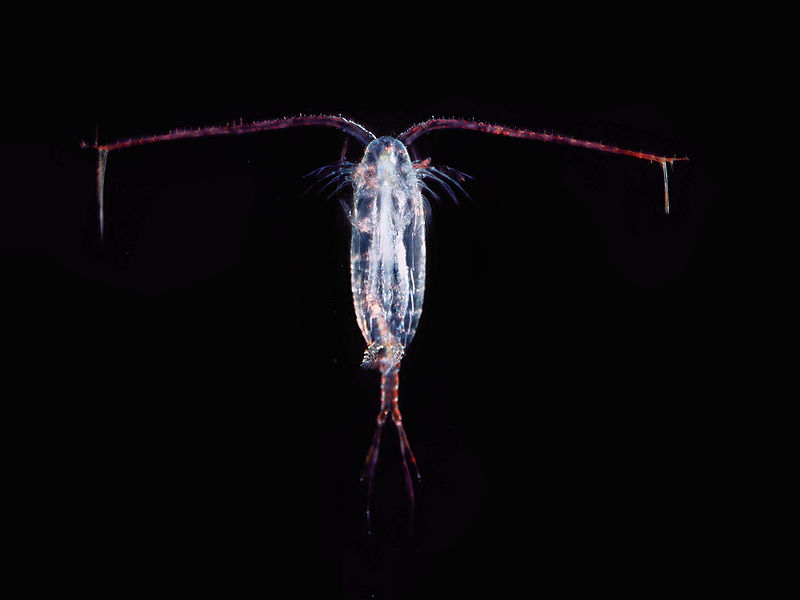Please note: Osher Rainforest will be closed for maintenance Jan. 14–16.
Science News
Sink or Float?
June 28, 2011

Copepods are teeny little crustaceans—only about three millimeters long—that live both in the ocean and freshwater habitats. Like other small crustaceans, they go through diapauses, kind of like hibernation. It’s a “method of survival during dry or low productivity periods. For example, many fairy shrimp can form spore-like eggs that may completely dry out, yet remain viable for decades. These cysts are capable of sitting on the dry lake beds of deserts for a quarter century or more waiting for the torrential rains to fill the lake bed, rehydrate and hatch as larvae,” according to Bob Van Syoc, PhD, Senior Collection Manager of Invertebrates here at the Academy.
In the winter in the Southern Ocean, diapauses are especially critical when seas are stormy and food scarce. But for years, scientists couldn’t figure out how copepods can sink to great depths—between 500 to 3500 meters (1,600 to 11,480 feet!)—with full bellies. With all the fat the copepods pack away before diapause, they should become more buoyant, not less.
The mystery now appears to be solved! Publishing in the journal Limnology and Oceanography, researchers from the British Antarctic Survey discovered that to reach those ocean depths, the copepod's oily body fluids undergo a remarkable transformation. As the animals swim deeper, water pressure triggers a process that converts their oil to a more solid form rather like the consistency of butter. This change in density acts like a ‘diver's weight belt’, enabling them to be neutrally buoyant and spend up to six months in deep waters without wasting energy on constant swimming.
Bob told us that while “many planktonic organisms store fats and oils to aid in floatation as well as food reserves… the story here is the conversion of liquid to semi-solid state fat. This helps the copepods remain at depth, rather than float to the surface.”
Copepods aren’t alone in this sinking conversion. From ScienceNOW:
Surprisingly, the trick is similar to the one sperm whales use when diving… When they dive, they pump cool blood to a massive fat store in their heads, so the fat solidifies and becomes dense enough that they can descend without much swimming. By adjusting the fat's temperature, they can keep it solid to remain at a particular depth, or liquefy it for an easy ascent… [Lead researcher David] Pond says, "[It's] a classic example of convergent evolution."
And while copepods are puny compared to their massive oceanic neighbors, their importance is huge. Rich in omega-3 oil and with high caloric value, “they represent a vast reserve of ocean biomass that provides a crucial component of the food chain,” says Pond.
Bob agrees. “Without them the oceanic food web would collapse…or at least be very crumpled.”
Image: Lycaon/Wikimedia